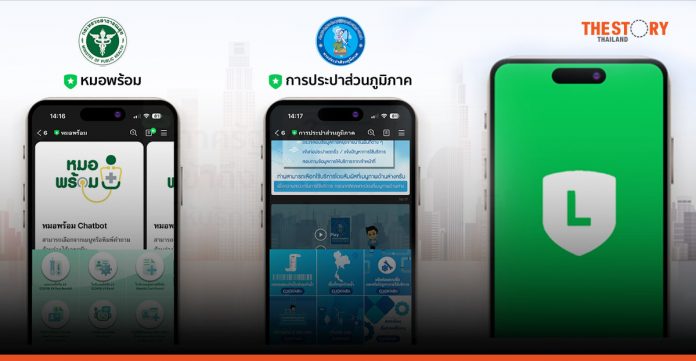The pivotal general election in Thailand recently saw a tidal change in political communication methodology in the country, especially the extensive use of digital media. These media tools were used so extensively that they essentially became the main platforms for the campaigns. Social media platforms connected with the public in a variety of ways, with differing goals, and were predominantly used to raise policy awareness among the wider population.
LINE was the platform used by several parties during campaigning, due to its remarkable reach of more than 53 million Thai individuals. It enabled access to all genders, ages and regions across the country. Prior to the election, the LINE Official Account (LINE OA), served as an online home for each politician or political party. This ‘home’ opened its doors to the public, inviting them in as friends, to become acquainted, to receive news updates and learn about the party’s policies.
It also offered a space for increased interaction and to get to know each other, even without meeting in person. Consequently, this made the public feel more connected and included. Importantly, the public could trust that the source was authentic and that the information was accurate, because these were verified official accounts.
With these characteristics, LINE proved to be more than just an effective digital tool during the campaign period. It has emerged as a powerful platform that government agencies can continue to use for the benefit of national administration. Government agencies can invite the public to follow them as friends, to receive news updates and monitor the implementation of manifesto promises closely. It can also serve as a channel through which to hear the public’s concerns and enables one-to-one communication.
This transforms LINE into a significant source of information, helping government agencies to understand the needs, and mood, of the public, both broadly and in-depth. These insights can be analysed to improve operations and to respond to the public effectively.
The post-election leveraging of LINE OA’s features will extend far beyond political communication. It can also be used to enhance and improve people’s quality of life, as exemplified in the case study of Fukuoka in Japan. There, the government uses LINE OA to distribute news and information to its citizens, categorised and sent according to target groups, which are identified based on their area of residence and by age range. This ensures that citizens receive necessary and beneficial information, such as emergency alerts, forecasts of PM2.5 dust levels, and it serves as a channel through which complaints can be submitted easily.
This allows both the state and citizens to identify and resolve issues collaboratively and promptly. Meanwhile, in Thailand, many government agencies have adopted LINE OA for public service, with visible and widespread usage. Examples include “Moh Promt”, which provides health information and services, and the Provincial Waterworks Authority, which facilitates water bill payments and accepts service-related complaints via LINE OA. These services continue to benefit the Thai people today.
NIA unveils the success of the YMID with the “Innovation Sharing” model





